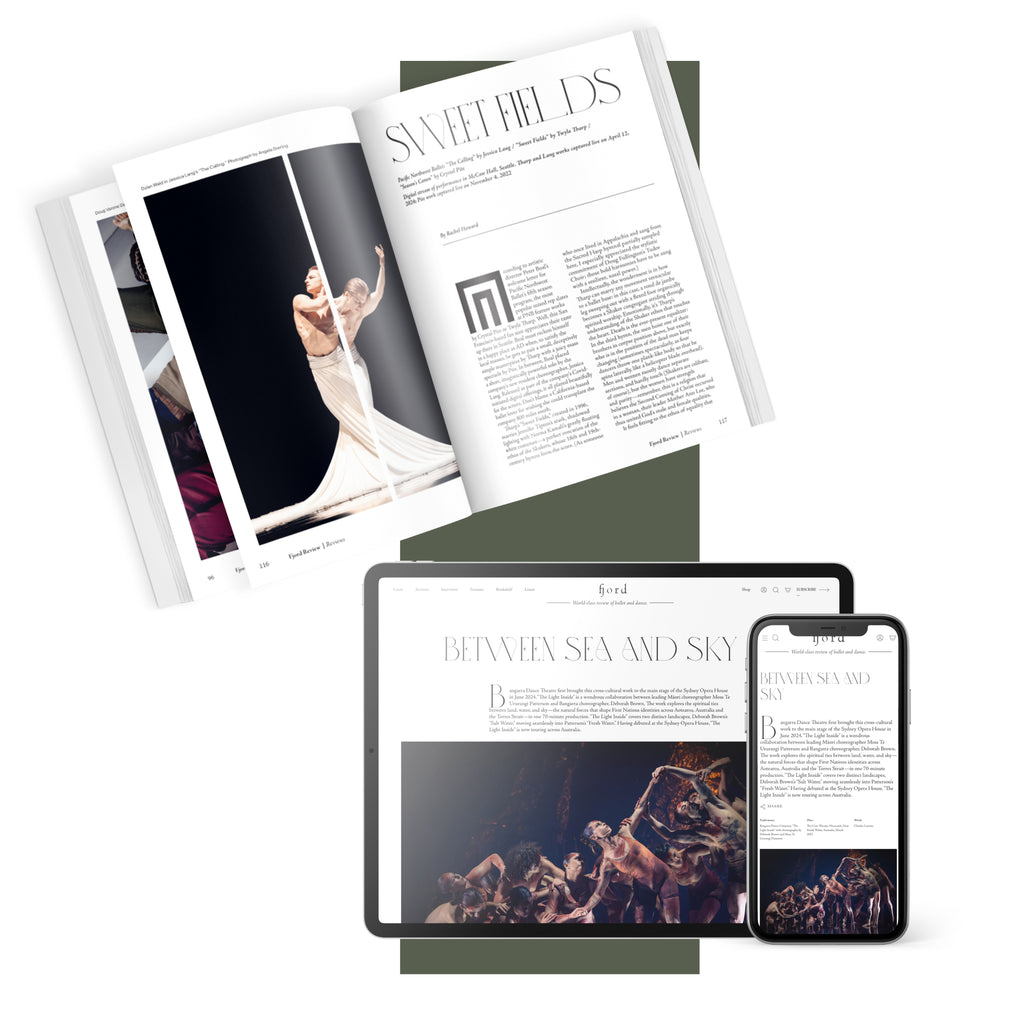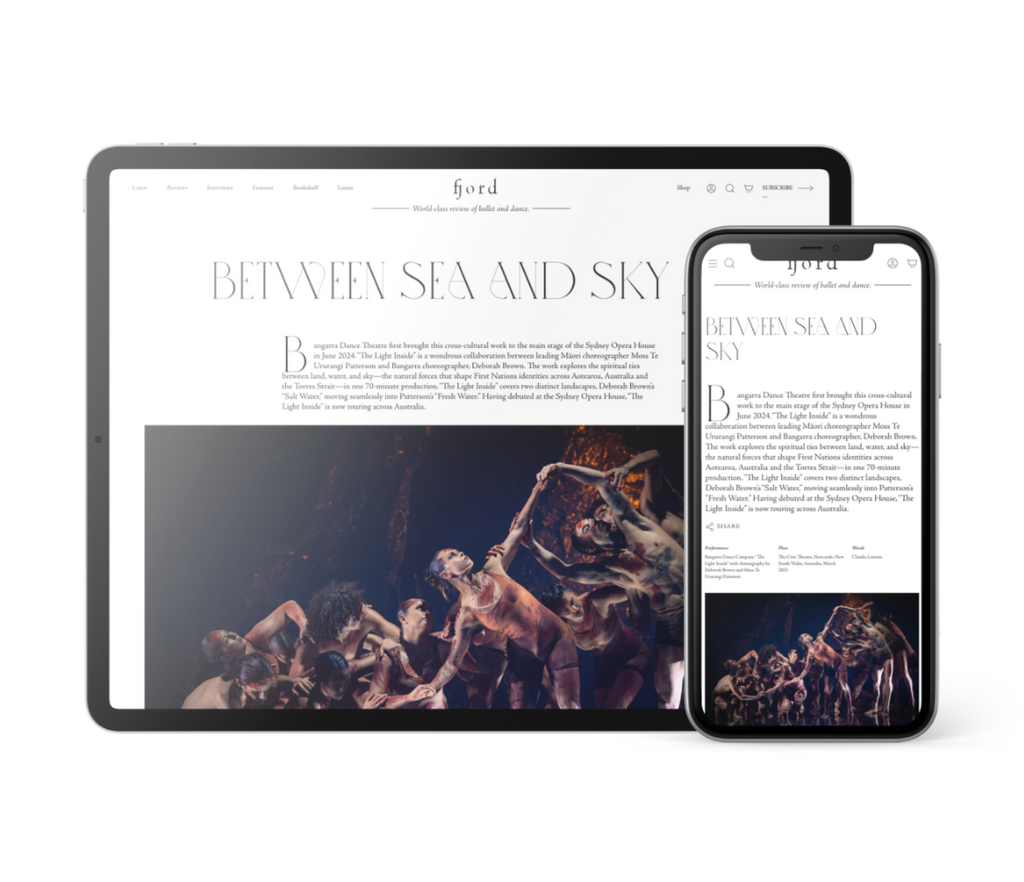Arlene, of course, was an editor herself—cofounder, in 1965 (with the critic and Cunningham archivist David Vaughan and the agent Robert Cornfield), and the first editor of the independent journal of speculative thought Ballet Review. The year of BR’s founding was also the year that the American Dance Guild’s Dance Scope was founded, and in short order other independent dance journals popped up. Dance Perspectives had been going since the 1960s, and to it were added Dance Chronicle, Arabesque, and the mimeographed EDDY. All took dance seriously, but Ballet Review was the only one that wasn’t earnest about its seriousness. Put together by Arlene at her kitchen table, it embodied not only her take-no-prisoners intellect and inquiring mind but also her streak of mischief and provocation. In early issues, she assembled a team of critics and choreographers (including the brilliant choreographer and designer James Waring and the comic master Peter Anastos) who contributed to a grid in which each of them graded new works, from A+ to F-. In an essay on dance critics, Arlene hung the Saturday Review’s Walter Terry out to dry, hoisted on his own petard. (“There is only one Tallchief!” she reports him as declaring in print, adding, on behalf of Marjorie as well as her sister, Maria, “Of course, there are two.”)
At the New Yorker, Arlene’s editing side did not easily tolerate mistakes in her copy—or unsanctioned monkeying around with her words—by the magazine’s staff. And, once, she couldn’t resist treating the back of the book as an outpost of her Ballet Review. The editor William Shawn (who invented the “Dancing” column for her expressly) did not countenance comedy in the arts columns, but Arlene fooled him by filing a column about “Ballet Alert,” which she described decades later as “a fictitious telephone service for hyperactive balletomanes.” This explanation is contained in her introduction to her last collection of columns, Writing in the Dark, Dancing in The New Yorker, which contains a number of hitherto-uncollected columns, most prominent the now-notorious “Discussing the Undiscussable,” the column where she, so to speak, kicked the hornet’s nest by declaring that the Bill T. Jones work “Still/Here”—announced by his company in advance as a dance having to do with sufferers of terminal ailments and miseries—was, in effect, holding her critical freedom hostage to obligatory sentiment. And so she was going to explain why what it was doing was pernicious to criticism, something she knew from experience would be a fact without her having to see it, even though she was discussing it in print. At that time, the New Yorker’s editor, Tina Brown—who had an appetite for the sensational—was privately said to be gung-ho to run the story.
In terms of dance criticism as deadline journalism, Arlene wasn’t wrong; critics (and/or their editors) constantly make decisions about whether they can attend shows, much less write about them, based entirely on press releases, practical knowledge of the moment, spatial considerations, and gut instinct. There are too many shows and not world enough and time to cover everything. Yet, “right” as she may have been in a practical context, to a dance field deeply damaged by AIDS and a tributary of journalism in which firsthand reporting is sacred, Arlene’s cri de coeur on behalf of maintaining purity for critics was not going to cut anyone’s mustard, much less pull readers in to share the comic spirit that—as she noted in her introduction to her last collection—engendered it.
Going back through Arlene’s work—well, versions of her work, for she continued to edit ruthlessly between publication in the New Yorker and the collections from Knopf or Farrar, Straus and Giroux—I continue to be amazed by how alive the essays are, how well Arlene’s idea that she is reviewing not the dance in itself but the “afterimage” of the dance serves her as a freeing permission to script her thoughts into a narrative of consciousness that becomes, not Arlene’s consciousness but that of the dance after all. Her way with a declarative sentence is positively magical. The reviews no longer have evaluation as their destination; instead, they exist in order to scope out the identity of the experience, insofar as the afterimage makes that available. Evaluation is a “by the way.”













Appreciate the love and equanimity in this essay for Croce’s art, not to mention the vast connective tissue you share regarding Croce’s craft. Thank you Mindy!
Robert Cornfield has written again to say it is his understanding that Arlene was recommended to the New Yorker by the distinguished British music critic Andrew Porter, who reviewed for the magazine from the early 1970s until 1992, when he moved back to England. Could it be that Arlene was recommended by several literary lions, who recognized her as a rightful member of their pride?
A couple of glitches: Arlene’s agent and friend, Robert Cornfield, notes that her Fred&Ginger book was inspired by a festival of their RKO pictures at the old New Yorker theater, at 88th and Broadway, not by a festival at MoMA. Also, the dance critic Martha Ullman West observes that my wording suggests the remarkable dance-and-cultural history by Megan Pugh, “America Dances: From the Cakewalk to the Moonwalk,” is restricted to a story of black tap dancing, a miswriting on my part—and an impression that Arlene’s review certainly does not leave. (My apology for my error is especially abashed, as, ten years ago, I happily read Dr. Pugh’s history of vernacular and theatrical American dancing as one of her enthusiastic peer reviewers.) Finally, Robert Schumann did not write the music mentioned; rather, George Balanchine choreographed a work named, specifically, “Robert Schumann’s ‘Davidsbündlertänze.’” Schumann’s anxiety concerning critics and his generally deteriorated mental state are referred to in the ballet, and in the title, surely, Balanchine was reminding his audience that this was Schumann’s world they were watching, not Balanchine’s autobiography. Of course, one doesn’t have to agree with his idea of what he had made, but that’s what he seems to have intended, and to get the title’s thorny punctuation exact is a way of showing respect. I got it wrong in my copy and missed it on the proofreading draft.